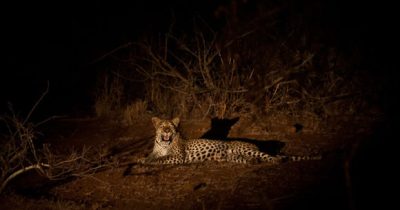Shifting Sands in the Ngorongoro Conservation Area
Beyond the popular wildlife in the Ngorongoro Conservation Area are the shifting Sands. The Shifting sands are the black dunes, primarily composed of volcanic ash. They are often driven by natural and unusual geomagnetic forces that reach up to 29 meters per year. They are unique to the Ngorongoro Conservation Area, thus fascinating geologists and travelers on an African Safari.
The Shifting Sands offer more than just a geological spectacle but a symbol of the dynamic forces of nature, constantly changing the landscape and shaping the environment in a way that can be seen, felt, and experienced by those who venture into this part of Ngorongoro. For travelers visiting the area, the Shifting Sands are not just a point of interest but a reminder of the power and mystery of Earth’s natural processes. The Shifting Sands is an enduring testament to the forces shaping our world, offering visitors a truly unforgettable experience.

Formation and Movement of the Shifting Sands
The shifting sands originate from an active Ol Doinyo Lengai Volcano, renowned for consisting of the rare natro-carbonatite lava, which forms a core of the shifting sands when it cools, thus forming a dark-colored ash. As the wind blows across the Ol Doinyo Lengai Volcano, it sweeps off these sands in a westward direction, creating a dynamic and ever-changing landscape. Furthermore, the magnetic properties contained in the dark ash stick together with the sand, contributing to its movement, thus making them unique and isolated in the sprawling Ngorongoro Conservation Area, which adds to the rich natural beauty of the Ngorongoro Conservation Area with blending natural wonders beyond wildlife and vibrant local culture.
The Significance of the Shifting Sands in Ngorongoro
Scientific and Geological Importance: The Shifting Sands provide a fascinating case study for geologists and scientists seeking to understand volcanic activity, geomagnetic phenomena, and the movement of dunes. This unique aspect makes the Shifting Sands one of Earth’s rarest forms of dunes. They offer insights into volcanic activity and the peculiarities of magnetism in nature, providing valuable data for studies on wind erosion, volcanic landscapes, and the long-term environmental impacts of volcanic eruptions.
Ecological Role and Impact: While the sands are barren and inhospitable for plant life, they provide a unique surrounding habitat to a variety of wildlife species, including migratory bird species, large herbivores, and predators, all of which rely on the broader Ngorongoro ecosystem for survival.
Cultural significance for the Masai People: The Maasai people believe that the sands originate from Ol Doinyo Lengai and consider them sacred and of profound spiritual importance. During drought, the Masai people gather at the dunes to perform rituals, including sacrifices that invoke rainfall; thus, this creates a deep connection between the Masai and the shifting sands, highlighting a significant role in their cultural and spiritual life.
Tourism and Educational Value: The shifting sands often attract travelers, scientists, and photographers from around the world who are keen to witness this rare phenomenon. This offers them an insight into the science behind the dunes and their connection to volcanic activity and environmental processes.
Explore Beyond the Shifting Sands in the Ngorongoro Conservation Area
Ngorongoro Conservation Area is one of the popular destinations for wildlife viewing in Tanzania consisting of over 24,000 large mammals including the waterbucks, African leopards, black rhinos, buffaloes, cheetahs, crocodiles, East African wild dogs, elands, grant’s gazelle, zebra, hippopotamus, impala, lions, oribi, Thomson’s gazelles, Topi and wildebeest. Ngorongoro Conservation Area is popular for the wildebeest migration, including over 1.6 million wildebeests, 450,000 zebras, and 265,000 gazelles, making it an annual event.
Game Drive Safaris
These are the best ways to explore the Ngorongoro Conservation Crater, also known as the Garden of Eden. Game drive safaris give a chance to get up close with wildlife in their natural setting, including different species such as waterbucks, African leopards, black rhinos, buffaloes, cheetahs, crocodiles, East African wild dogs, elands, Grant’s gazelle, zebra, hippopotamus, impala, lions, oribi, Thomson’s gazelles, Topi, and wildebeest.
Bird Watching
The Ngorongoro conservation Area is one of the best birding destinations in Tanzania on a safari drive where you can spot a variety of bird species including ostriches, flamingos, white-backed vultures, golden eagles, lappet-faced vultures, secretary birds, African fish eagles, grey crowned cranes, kori bustards, crowned lapwings, grey herons, lilac-breasted rollers, hornbills, wagtails, red-billed queleas, Marabou storks, yellow-billed storks, red-necked falcons, weaver birds, spur-winged lapwings, lesser kestrels, buff-crested bustards, and various species of shrikes, finches, and hornbills.
Cultural Experiences with the Hadzabe Tribe
Visiting the Hadzabe tribe is a unique cultural experience, offering insight into one of the last remaining hunter-gatherer communities in the world. The Hadzabe people are typically hunters and food-gatherers who go to the park to kill wildlife for their survival. According to their culture, Men hunt down animals for food while women gather fruits, plants, and honey for food.
Olduvai Gorge
Often referred to as the cradle of humanity, where fossils and stone tools of early humans were discovered, giving you a chance to learn about early man’s evolution and history.
Best Time to Explore the Shifting Sands
The shifting sands can be visited at any time of the year. However, the best time to explore them is typically the dry season, from June to October. Usually, this is early in the morning and late in the evening, when the dry air and lack of rain mean clearer views of the surrounding plains, nearby Olduvai Gorge, and possibly even Mount Ol Doinyo Lengai in the distance.
In conclusion, the Shifting Sands are a unique and fascinating natural wonder worth visiting, though they can be easily overlooked when compared to the dramatic wildlife of the Ngorongoro Conservation Area. The Shifting Sands not only offer natural beauty but also a rich history and cultural significance to visitors on a safari in the Ngorongoro Conservation Area, thus triggering a memorable adventure to cherish for a lifetime.












